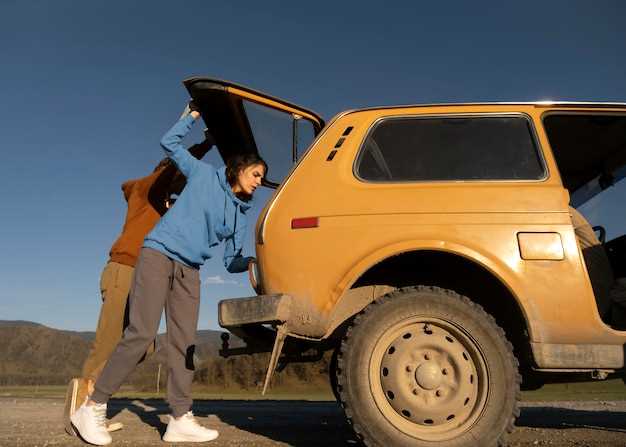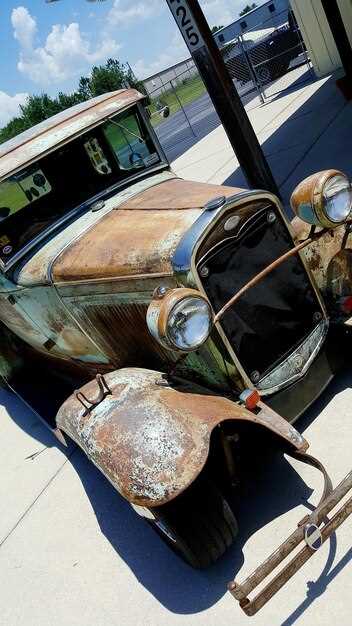
Transporting a vintage car requires special attention and care to ensure that it arrives at its destination in pristine condition. Unlike regular vehicles, vintage cars are often more delicate and require specific handling methods to avoid any potential damage during shipping. Understanding the right techniques and precautions to take can save both time and expense in the long run.
Choosing the Right Transport Method is the first step in safeguarding your classic vehicle. There are various options available, such as open or enclosed transport, each with its own advantages and disadvantages. Enclosed transport is generally recommended for vintage cars as it provides an extra layer of protection against the elements and road debris, ensuring your car remains untouched throughout its journey.
Additionally, it is crucial to prepare your car for shipping. This involves cleaning the vehicle, removing any loose items, and documenting its condition before transport. By taking these steps, you can help prevent any misunderstandings regarding the car’s state upon delivery. Understanding these safe transport methods can help car enthusiasts preserve their vintage treasures while providing peace of mind during the shipping process.
Selecting the Right Shipping Method for Your Vintage Car
When it comes to transporting your vintage car, choosing the right shipping method is crucial to ensure its safety and condition upon arrival. Several options are available, each with its own advantages and considerations.
Firstly, enclosed transport is often the preferred choice for vintage vehicles. This method utilizes a fully enclosed trailer that provides maximum protection from environmental elements, road debris, and potential scratches. It is particularly beneficial for classic cars that have been meticulously restored or maintain high market value.
Open transport, while generally more economical, exposes the vehicle to the elements. This method may be suitable for less fragile vintage cars, provided they have sufficient weatherproofing. However, potential risks such as exposure to rain, wind, and sunlight should be assessed before making a decision.
Another option is door-to-door shipping, where the transport company picks up your car directly from your location and delivers it to your specified destination. This method offers convenience and reduces the need for additional handling. However, it is essential to confirm that the carrier is experienced with vintage vehicles to ensure proper handling throughout the process.
Terminal-to-terminal shipping is another alternative, where vehicles are dropped off and picked up at designated terminals. While this option can be more cost-effective, it may involve additional logistics, such as coordinating transport to and from the terminal and potential exposure during loading and unloading.
Finally, consider the company’s experience with vintage car transport when selecting a shipping method. Look for reviews, inquire about their insurance policies, and ask about their handling procedures. Ensuring the company specializes in vintage car shipping can provide greater peace of mind throughout the transportation process.
Preparing Your Vintage Car for Secure Transport

Before you start the transport of your vintage car, proper preparation is essential to ensure its safety and condition remain intact. Follow these steps to achieve a secure and damage-free transport experience.
1. Clean the Car Thoroughly: Begin by washing your vintage car to remove dirt and debris. A clean surface allows for easier inspection and identification of any existing scratches or dents which should be documented prior to transport.
2. Document the Condition: Take detailed photographs of your car from multiple angles. This documentation serves as a reference for its pre-transport condition and can be invaluable in case of disputes or damage claims.
3. Disable Alarm Systems: If your vintage car is equipped with an alarm or tracking system, ensure to disable it temporarily during transport to avoid false alarms or unnecessary complications.
4. Check Fluid Levels: Inspect and top up all essential fluids, including oil and coolant. This step helps prevent engine damage during transportation, especially if the car needs to be moved for any reason during the process.
5. Protect Vulnerable Areas: Use soft padding or blankets to cover delicate areas, such as mirrors, bumpers, and trim. This extra layer of protection helps guard against scratches and minor impacts during the transport process.
6. Secure Loose Parts: Ensure all parts such as antennas, convertible tops, or other detachable accessories are securely fastened or removed. Loose items can become hazards during transport.
7. Choose the Right Transport Method: Depending on your budget and preference, select between enclosed or open transport. Enclosed transport offers the highest level of protection, especially for vintage cars.
8. Work with Professionals: Hire a transport service that specializes in vintage cars. They typically possess the experience and equipment necessary to handle your vehicle with care, providing peace of mind throughout the journey.
By following these steps, you can prepare your vintage car for transport, minimizing the risk of damage and ensuring safe delivery to its destination.
What to Check After Delivery to Ensure No Damage Occurred

After the transportation of your vintage car, it is crucial to perform a thorough inspection to confirm that no damage has occurred during transit. Begin by examining the exterior of the vehicle. Look for any dents, scratches, or paint chips that may have been introduced while loading or unloading the car. Pay close attention to the corners, edges, and areas around the wheels where impacts are more likely to happen.
Next, check the glass components, including the windshield, windows, and mirrors. Ensure there are no cracks or chips that could compromise visibility or safety. Inspect the undercarriage of the vintage car as well. A visual check for any signs of scraping, rust, or liquid leaks can help identify any potential issues that might have arisen during transport.
Open the doors, hood, and trunk to verify that they function properly. Listen for any abnormal sounds that might indicate misalignment or damage. Additionally, start the engine and check all electronic components, such as lights, gauges, and audio systems. This ensures that the car is running smoothly and that no internal components were affected during transport.
Lastly, take some time to inspect the tires. Check for proper inflation and look for any unusual wear patterns that could signal impact-related damage. Document any findings with photographs, especially if you notice issues that were not present before transportation. This documentation can be vital for claims or discussions with the transport company.

